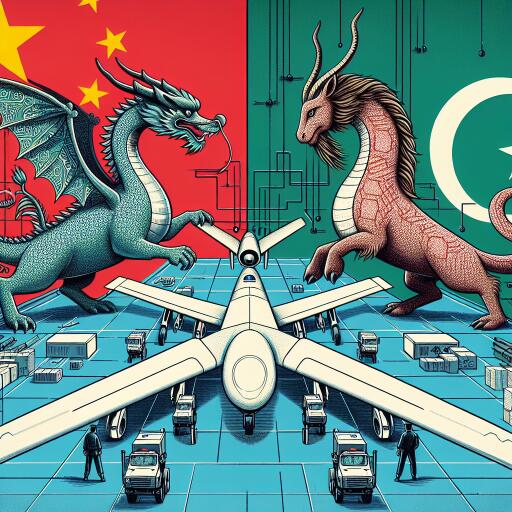UAV Industry Heralding New Frontiers for Pak-China Cooperation
As the global industrial landscape evolves, UAV (unmanned aerial vehicle) technology emerges as a pivotal frontier in international collaborations. A significant leap forward is on the horizon, particularly in the realm of Pakistan-China relations, with the UAV industry marking a new era that promises to bolster economic and technological cooperation between these longstanding allies.
During the recent Pakistan China Business Forum held in Shenzhen, Sun Yang, the Vice President of the Shenzhen UAV Industry Association, highlighted the burgeoning prospects of the UAV sector starting 2024. These innovations are not just transforming the skies but are also laying the groundwork for enhanced bilateral cooperation that reaches new heights.
In an era where climate change poses unprecedented challenges, particularly in the agricultural sector, Pakistan and China are joining forces to harness UAV technology. This collaboration aims to mitigate the adverse impacts of environmental changes on agriculture, ensuring both food security and the well-being of farming communities.
Ghulam Qadir, the Commercial Counsellor of the Pakistani Embassy in China, has disclosed plans to strengthen this cooperation further. An invitation has been extended to 50 to 60 Chinese technology firms specializing in UAVs and AI to explore opportunities in Pakistan in the coming months. This initiative underscores the commitment of both nations to leverage cutting-edge technologies for mutual benefit.
Dong, the CEO of Baina Zhihang, a pioneering UAV startup in Shenzhen, considers South Asia and South America as fertile grounds for UAV deployment, especially in agriculture. Dong emphasized the vast potential in South Asian territories, like the expansive rice paddies, which can greatly benefit from advanced UAV technologies for tasks such as weed control, and efficient fertilizer and pesticide dispersion.
Furthermore, Dong noted the ease of cooperation facilitated by similar drone regulations across various Asian countries, and the strong people-to-people ties that enhance communication and technical exchange.
China has recognized the significant potential of the “low-altitude economy”, integrating UAVs as a strategic component of its economic planning. This new industry not only promises to revolutionize the airspace below 1000 meters but also propels China’s growth by tapping into UAV’s versatile applications. With an impressive annual growth rate, China’s civilian drone industry is poised to redefine global markets.
Shenzhen, known for its economic vitality, has become a global hub for UAV manufacturing and innovation, contributing significantly to both consumer-level and industrial-level drone markets worldwide. The city’s success is highlighted by the remarkable achievement of Meituan’s UAV fleet, which successfully completed over 400,000 trips last year, setting a benchmark for operational excellence in the industry.
Looking ahead, the focus is on developing UAVs capable of safely transporting passengers, a milestone that will transform urban mobility. Sun Yang emphasized the necessity for Pakistan to build the requisite infrastructure, including communication networks and digital operations, to fully embrace and integrate UAV technology across various domains beyond agriculture, such as package delivery, mid-air sightseeing, first aid, and urban patrol.
This cooperation between Pakistan and China in the UAV sector is more than a technological partnership; it’s a strategic alliance that foresees the future of economic development, technological advancements, and cross-border collaboration. As both countries propel into this new era, the skies indeed seem the limit for what they can achieve together.
